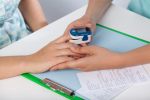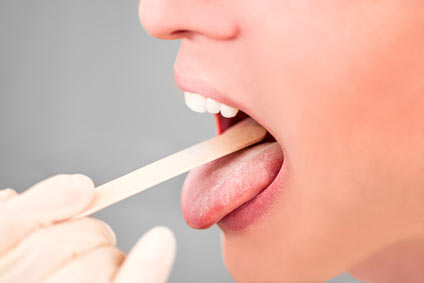What To Do While Waiting For CPAP?
by Jay
(Colorado)
I had severe sleep apnea years ago.
I was also diagnosed with hypothyroidism after my thyroid levels got back to normal I lost thirty pounds and the apnea went away.
Recently it came back for unknown reason and I would kill for the old CPA that I threw away years ago.
I feel like staying awake until I can get through another sleep study and get another CPAP.
What do I do in the meantime, before I get the new CPAP? I just feel worse if I sleep, headache, heavy chest, very anxious ect.
Answer
There are many things to do while waiting to receive or buy a CPAP machine. It's important to help alleviate your sleep apnea as much as possible with what you have now, until you get the right treatment.
Before getting the CPAP, there are some methods that can improve your quality of sleep usually immediately, and there are also things that will help you after a longer period of time.
How to Improve Your Sleep Tonight While Waiting for CPAP?
- Buy a Portable Pulse Oximeter - you need to monitor your blood oxygen levels during sleep, which can be affected by sleep apnea.
The lower the oxygen level, the worse is for your heart and your brain. With the pulse oximeter you'll also be able to measure how effective is your sleep apnea treatment and other methods to improve your sleep, including what I'll describe bellow.
If you use an oximeter that has an alarm as the one described here, you can set it up for 90%. Everything that goes lower than this will trigger the alarm, so you'll wake up and breathe deeper.
The downside is that you may wake up more often, depending how severe is your sleep apnea and your oxygen deprivation. - Sleep on Your Side - sleeping on your side helps many patients with positional sleep apnea and with snoring by preventing the airways to collapse. Moreover, side sleeping position helps prevent the tongue to block the airway due to gravity effects.
To learn how to sleep efficiently in a side sleeping position, please read the Positional Therapy for Sleep Apnea guide. - Sleep on a Wedge Pillow - elevation of the upper body can make a difference in sleep apnea. Your tongue and upper airway is less likely to collapse when you sleep in a more upright position.
A wedge pillow or anything that helps you sleep in bed in an upright position will lessen the effects of sleep apnea. There are patients who gave up CPAP, by using a dental appliance for sleep apnea and a wedge pillow. However, for some people this sleeping position can be uncomfortable. Preferable is to first try the side sleeping method. - Dental devices - there are special mouthpieces that can prevent your jaw falling back while you sleep. It can also open your upper airway by moving your jaw and tongue forward (by small increments).
Some of these dental devices can be quite expensive, because they can have the same rate of succes as the CPAP machine. However, if you're already waiting for the CPAP, you need a cheaper dental device. Read the Treatment with dental appliances for sleep apnea to discover which device works best for you. - Open Your Nasal Airways - Use nasal strips and dilators to help open your nasal passages. Breathe Right strips can be a very helpful in this situation.
- Alcohol, Smoking and Sedatives - try to avoid smoking for at least several hours before going to sleep. Smoking can tighten the airways worsening your sleep apnea.
There are also things you can do that will help you long term with sleep apnea.
What To Do Long Term to Improve Sleep Apnea while Waiting for CPAP?
- Education about CPAP machines - Do you know what type of CPAP you have to buy or receive from your doctor? What functions the CPAP needs to allow you to learn more about the sleep efficiency from your treatment?
It will be a shame to accept a breathing machine that doesn't have the vital information. For example, you'll need a CPAP that is full data capable, such as Resmed Elire or PR System One Pro. Read more about CPAP machines here. - Education about CPAP masks - as you probably know, choosing a CPAP mask can be a pain. The mask is a vital part of your CPAP therapy.
If you have a leak, your sleep apnea can't be treated, and you may also get side effects (puffy eyes, dry mouth, etc.). Learn more about CPAP masks here. - Practice exercises for sleep apnea - Clinical studies demonstrated that patients with obstructive apnea can alleviate their sleep disorder if they practice special exercises for neck and tongue. The results usually appear after 2 to 3 months.
Because there are no side effects in using these exercises, and there are also proven positive results, I recommend to try them consistently. Read more about Exercises for Sleep Apnea here.
I hope it helps. Don't be afraid to comment back.
Remy Thierry
Founder of Sleep Apnea Guide
Comments for What To Do While Waiting For CPAP?
|
||
|
||
|
||







